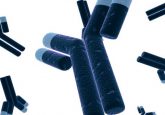Getting to grips with metabolites before the crunch of incurred samples

In this installment of Robert MacNeill’s (Envigo; Huntingdon, UK) column, Robert discusses how to get to grips with metabolites.
Robert MacNeill received his Bachelor’s degree with Honors in Chemistry from Heriot Watt University then his MSc in Analytical Chemistry from the University of Huddersfield, both in the United Kingdom. Robert is also a Chartered Chemist and a Fellow of the Royal Society of Chemistry. With 20 years of experience in all aspects of quantitative bioanalytical LC–MS/MS method development, 11 of these years heading method development activities within HLS/Envigo, and a regular author and peer reviewer for the journal Bioanalysis, Robert is a recognized expert and innovator in the field.
We are all familiar with the notion of a problem, or potential problem, being present and not addressed until such a time as it causes huge fallout. In the context of method development and subsequent use in quantitative bioanalytical LC–MS, analogies of this can be made to many characteristics of the method, but very few have more potential for fallout during analysis of incurred samples than what adversity could manifest by the presence of metabolites.
Most administered therapeutics will undergo metabolism, especially post-oral administration. As mentioned in some previous columns, there is the possibility of the generation of a great number of metabolites, and plenty that could have a significant interferent impact on quantitative data. After all, these are all related compounds.
This article is part of Robert MacNeill’s (Envigo) quarterly column for Bioanalysis Zone. You can read past installments of the column here.
There are two distinct phases of metabolism, resulting in two classes of metabolites, phase I and phase II. Phase I is where a compound undergoes small modifications to bestow more polarity, such as hydroxylation at various locations. Increasing polarity aids the elimination of the molecular entity and sets up avenues for conjugation, which is phase II metabolism. Conjugates may be, for instance, glucuronides or sulfates; typically a more pronounced polarity increase is the result, again helping elimination.
There are at least three ways in which metabolites can affect the performance and reliability of an assay. One of these is the chromatographic manifestation of metabolites in SRM channels monitoring other compounds. I have seen this several times with N-oxides, phase I metabolites labile in the thermal conditions of an ion source with heated auxiliary gas or heated probe, where conversion back to parent occurs, hence the visibility in the parent channel. This introduces the need for emphatic chromatographic resolution. Another way in which metabolites can make their presence felt is analogous to the main tendency of other interferent compounds that may be present in an extract. Upon coelution with analyte, the metabolite exerts a response-altering effect, usually suppressive, that creates havoc with signal strength and precision, a direct impact on matrix factor. The other way is often rather more sinister. Under certain solvent conditions, phase II metabolites in particular can cleave off the conjugate moiety ex vivo, if the conjugate bond to the rest of the molecule is hydrolytically labile like an ester link. This can occur readily with acyl glucuronides, and stored incurred samples at risk should ideally include a stabilizing additive. This potential instability not only affects the calculated concentrations of the metabolite, but may also affect, critically, the parent levels if such is the product of the reaction. Trans-esterification is an important phenomenon to be aware of in this context. It would be a great coup to glean, at the development stage, what the abundant metabolites are going to be, as we will then expect them and their knock-on effects in incurred samples.
Perhaps one means of doing this is by making use of in vitro incubations of test compounds. In other words, performing incubations of hepatocyte cultures or S9 fractions with parent compounds for administration, then extracting and analyzing with a view to identifying the metabolites produced. The use of TOF-MS or analogous HRAM technique, or even sweeping appropriate ranges in a quadrupole analyzer, should give more than a good idea of the metabolite content. This counts especially for any possible conjugates where mass differences are easily anticipated, such as the characteristic addition of 176 Da for a glucuronide unit, keeping in mind how the charge state will affect these differences upon translation to m/z. Also in phase I there is the complication of a much greater pool of possibilities, all mass spectrally closer to the parent.
Extraction from the incubate would have to be fairly nonselective, most ideally akin to protein precipitation procedures via addition of organic solvent. Something partition-based like LLE would risk substantial recovery loss, particularly in consideration of the greater polarity of metabolites in relation to the parent.
At this stage, the chromatography of the metabolites in the chromatographic method can be ascertained and any necessary adjustments subsequently made in order to get the right selectivity. The presence of unstable metabolites would also become apparent, and again, action taken if need be.
This amounts to an idea which may be of value in many cases. What could be more prudent, however, is to somehow involve incurred samples within method development and validations. In the big picture we can frequently expect there to be more than just metabolic interferences, but additional key LC–MS signal encumbrances unaccounted for in the control matrix sets of a validation. Clearly there would most often be practical and logistical obstacles, but if some kind of pilot in vivo work could be done for the sake of method reliability, I think there might, in an ideal world, be a good case for it.






